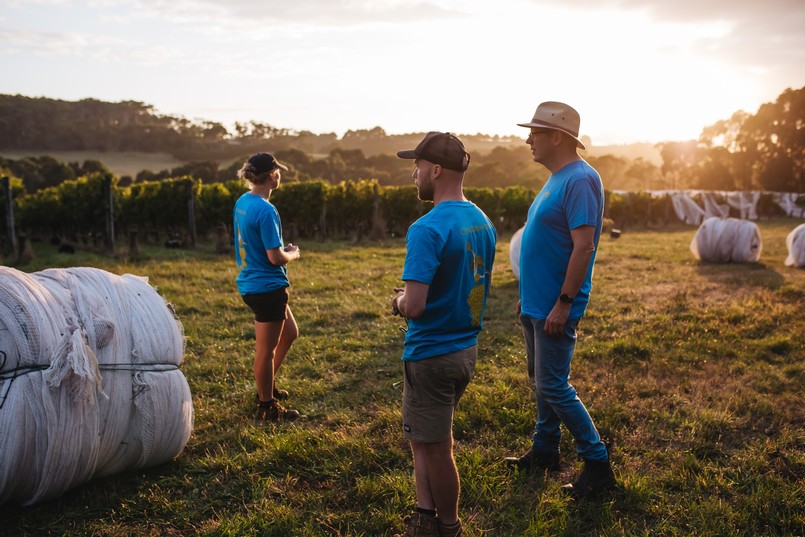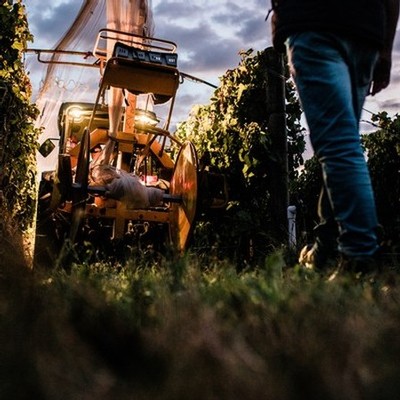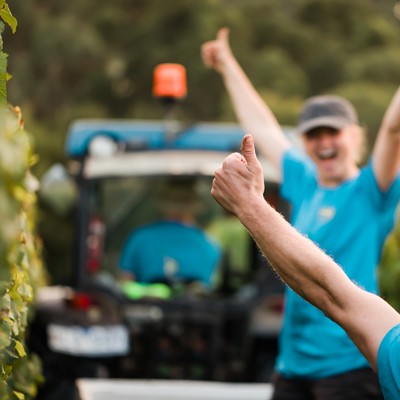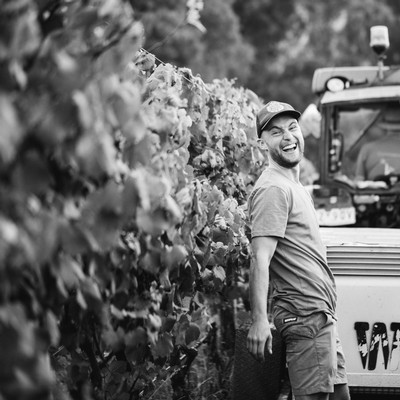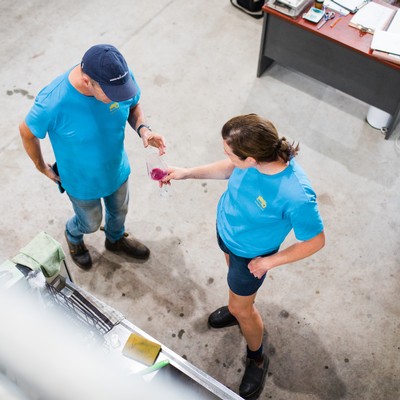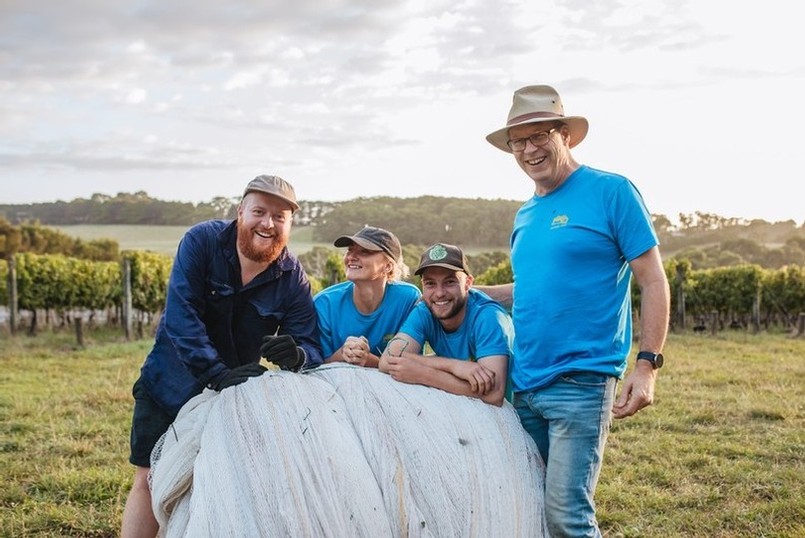News
Forbes: These 10 Wineries With Outstanding Restaurants

It’s 2023, and most wineries have fairly decent food—some local cheeses, cured meats and often a proper three-course lunch. But some of them are going far and above, installing Michelin-star (or Michelin-caliber) chefs on the premises and letting them run free with their technique and creativity. And of course, the wine pairings are always spot-on. Here, in alphabetical order, are ten of the most interesting right now.
Ten Minutes by Tractor, Mornington Peninsula, Australia
Ten Minutes by Tractor is the convergence of wine journeys that began almost 40 years ago with a group of people and vineyards that came together. While southwest Australia has its share of sophisticated wineries, Ten Minutes by Tractor stands out for having an equally sophisticated restaurant. Head chef Hayden Ellis is a Kiwi-born lover of local farming, foraging and worldly flavors. His innovative menu is driven by creating a powerful connection between food, wine and nature.
To read more visit Forbes.
Max Allen's Top Wines of 2023
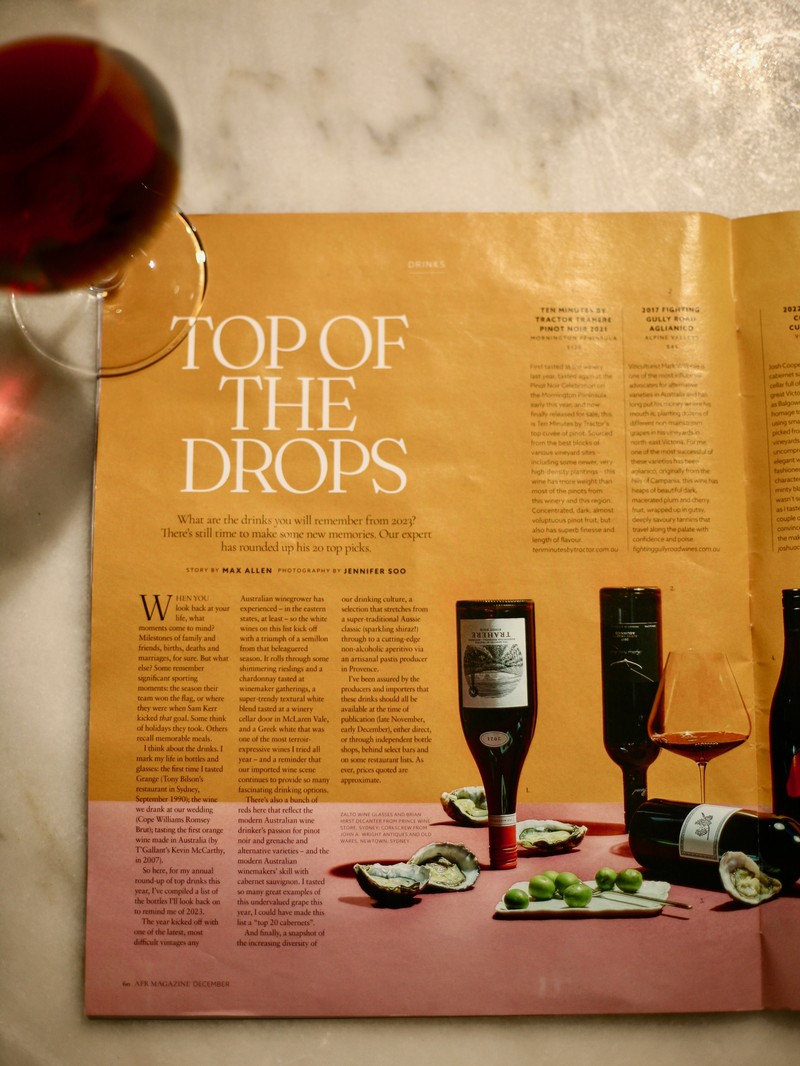
When you look back at your life, what moments come to mind? Milestones of family and friends, births, deaths and marriages, for sure. But what else? Some remember significant sporting moments: the season their team won the flag, or where they were when Sam Kerr kicked that goal. Some think of holidays they took. Others recall memorable meals....So here, for my annual round-up of top drinks this year, I’ve compiled a list of the bottles I’ll look back on to remind me of 2023.
Ten Minutes by Tractor Trahere Pinot Noir 2021
First tasted at the winery last year, tasted again at the Pinot Noir Celebration on the Mornington Peninsula early this year, and now finally released for sale, this is Ten Minutes by Tractor’s top cuvée of pinot. Sourced from the best blocks of various vineyard sites – including some newer, very high-density plantings – this wine has more weight than most of the pinots from this winery and this region. Concentrated, dark, almost voluptuous pinot fruit, but also has superb finesse and length of flavour.
To read more visit Australian Financial Review.
By Max Allen for AFR
Nov 24, 2023
Our Favourite Restaurants in Red Hill
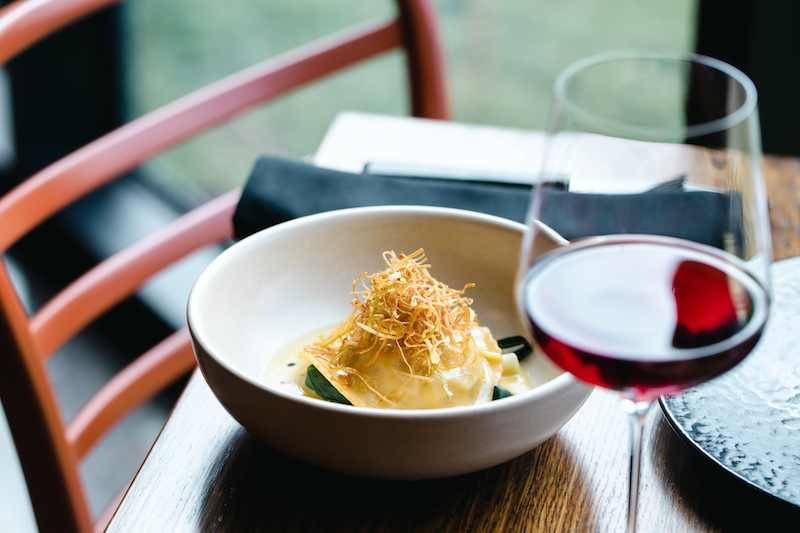
Located in the picturesque region of Victoria, Australia, Red Hill and Main Ridge offer a delightful array of culinary experiences for all food lovers. From quaint cafes to fine dining establishments, this region is a paradise for those seeking a memorable gastronomic journey. Here are some of the great restaurants to choose from in Red Hill and Main Ridge.
MANY LITTLE
Many Little offers a Modern Asian – Sri Lankan inspired cuisine.
2-5/159 Shoreham Rd, Red Hill South | 03 5989 2831
Dinner: Thurs - Sun
Lunch: Sat - Sun
FOXEY'S HANGOUT
Winemaker Tony Lee is a qualified chef & his dishes complement the wines. Many dishes change seasonally.
795 White Hill Rd, Red Hill | 03 5989 2022
Lunch: Fri - Mon (11-5pm)
ALLIS WINE BAR
Our new wine bar located in the cellar door featuring produce from our regenerative farm and the wider hinterland of the Mornington Peninsula.
681 Nepean Road, McCrae | 03 5982 1130
Dinner: Wed - Mon
MERRICKS GENERAL STORE
Merricks General Store is set in a beautiful country setting featuring great food and outstanding local wines.
33 Shoreham Road, Red Hill | 03 5989 8412
Breakfast & Lunch daily
MORNING SUN
Morning Sun is one of Foxeys Hangout’s single-vineyard sites. They serve shared plates inspired by this property’s Italian family heritage.
337 Main Creek Road, Main Ridge | 03 5989 6571
Lunch: Thurs - Sun (11-5pm)
TEDESCA OSTERIA
Tedesca Osteria is a more rustic dining experience based on Mornington Peninsula produce with a kitchen built around a wood fired oven & grill.
1175 Mornington Flinders Rd, Red Hill | 03 5989 9011
Lunch: Fri - Mon
PORT PHILLIP ESTATE
Panoramic views across the vines to Westernport Bay.
263 Red Hill Road, Red Hill | 03 5989 4444
Lunch: Wed - Sun, Dinner: Fri - Sat
LAURA AT PT LEO
Set amongst a 50 acre vineyard and sculpture park, this fine dining restaurant features local seasonal produce.
3649 Frankston - Flinders Rd, Merricks | 03 5931 2500
Dinner daily
PARINGA ESTATE RESTAURANT
An exciting and imaginative menu of colourfully presented, modern Australian cuisine.
44 Paringa Road, Red Hill | 03 5989 2669
Lunch: Wed - Sun, Dinner: Fri - Sat
POLPERRO
Fresh, textural & seasonal flavours with an emphasis on where the food comes from and how it is grown.
150 Red Hill Road, Red Hill South | 03 5989 2471
Lunch: Wed - Sun
Whether you're a food enthusiast seeking culinary adventures or simply looking for a memorable dining experience, the restaurants in Red Hill and Main Ridge are sure to satisfy your cravings. With a plethora of options ranging from casual cafes to upscale establishments, this region is a true haven for food lovers. Indulge in the flavors of this breathtaking part of Victoria and let your taste buds embark on a culinary journey like no other.
2022 Vintage Overview

VINTAGE IN BRIEF
The 2022 season started with a very wet and variable spring, resulting in poor flowering, small bunches and reduced yields across many sites.
The exceptional summer and autumn months to follow provided perfect ripening conditions that generated great concentration and striking flavours across all varieties.
SOME NOTES FROM MARTIN
The 2022 vintage started with higher than average rainfall, occasional storms, some hail and cool daytime temperatures. Less than ideal flowering conditions! The variable spring weather and its impact on flowering resulted in large differences in yields between vineyards both up and down the hill.
This changed in December, when temperatures started to increase, and we had weeks of dry fine weather. After a little wet weather in early January, we enjoyed a dry growing season, with the exception of a downpour on March 4th which helped to freshened everything up and refill the dams. It felt like a switch had been turned in January and from that point we enjoyed one of the best summer and autumn seasons we have had for many years - perfect ripening conditions.
As a result of weather conditions during flowering, the bunches that developed were small, in fact, very small! Some blocks only averaging around 35-40 grams per bunch, compared to something around 110 grams to 120 grams normally. These beautiful little bunches and berries may have lacked weight, but they had incredible intensity of flavour and lovely chewy skins.
During picking and sorting of all our fruit on our sorting table in the winery, we had to take great care to separate the secondary bunches from the primary fruit. Secondary bunches develop on lateral shoots later in the season and these bunches do not fully mature, so hence they are much less ripe.
Usually, secondary bunches are easy to identify because they are (usually, but now always) smaller and have a slightly paler colour (reflecting their lack of maturity), but sometimes they can be difficult to detect. Given how small the primary bunches were in 2022, we had to take a spend of time on the sorting table to sort all these secondary bunches out. It was definitely a year where having the sorting table and taking that time to sort every pick was very important to the end quality.
Because of the small berries and high skin to juice ratio, the Pinot’s had amazing colour, flavour and tannin intensity. The wines are bright, concentrated, generous and the Pinots have a lovely plush velvety texture. Again, because in part of the small bunches we also reached phenolic ripeness earlier, so average alcohols are lower than normal.
It is still early days, but I believe the wine quality in 2022 is exceptional. They are quite different stylistically than the 2021’s (which I also loved) and they will definitely reward some patience to show their full potential.
Discover the 2022 Vintage wines.

KEY DATES (MAIN RIDGE PINOT NOIR DATES FOR 2021/22)
- Budburst – 23 August 2021 (av 6 Sep)
- Flowering – 12 Nov 2021 (av 20 Nov)
- Veraison – 12 Jan 2022 (av 5 Feb)
- Harvest – 5 Mar 2022 (av 27 Mar)
- Hang time – 185 days (av 201 days)
- Up v Down Difference – 15 days (av 17 days)
2022 VINTAGE HIGHLIGHTS
Recent Wine Reviews

Here is a selection of recent wine reviews we'd like to share with you.
2021 Judd Pinot Noir
From the highest vineyard in the winery stable comes this seductive pinot noir showing the benefits of whole bunches with fine cinnamon and five-spice aromas well supported by plush beetroot and rhubarb. Fleshy and welcoming dark cherry flavours follow before tightening up to a long and fine finish. - Angus Hughson, The Australian
2021 McCutcheon Chardonnay
An embryonic chardonnay, with delicious purity of fruit, intensity and definition with layers of nectarine and citrus aromas plus an exotic touch of tangerine well integrated with high-quality oak treatment. Young and tight, it is beautifully pitched for cellaring but also delivers impressive drinkability. - Angus Hughson, The Australian
2021 Coolart Road Pinot Noir
This intriguing and distinclly savourypinot noir is a beauty with a fascinating array of aromas from fennel seed and wintergreens through to wild raspberry. It's coiled quite tight thanks to sinewy tannins but then slowly builds to a long energetic finish. - Angus Hughson The Australian
2021 Judd Chardonnay - 98 pts
Dried-herb/straw and other more savoury aromas, small white flowers and chalky minerals, the palate likewise very dry and savoury, with phenolic and acid presence that lingers on the farewell, adding a certain texture, almost a thickness, that will go well with the right food. There is umami here. Lovely line and length, finesse, focus and great persistence, the aftertaste complete and harmonious. A stunning chardonnay. - Huon Hooke, therealreview.com
2021 Wallis Chardonnay - 96 pts
Light-medium yellow colour; rich stone-fruit, almond and even some tropical accents combine with sweet roasted hazelnuts and faintly buttery aromas, making for a complex bouquet. The wine is very intense, powerful and driving, with lively lemon-sherbety acidity powering it along. It fills the mouth and the finish has a gentle grip and a big fanfare at the end. (Vineyard is on Main Ridge. P58 clone) - Huon Hooke, therealreview.com
2021 Mills Chardonnay - 95 pts
Light-mid yellow hue; shaved almond and straw aromas, the palate delicate, refined and intense, with drive and persistence. A superb chardonnay, understated and finely tensioned, graceful and very long. This would take some age to advantage. (Vineyard is at Merricks North) Huon Hooke, therealreview.com
2021 McCutcheon Chardonnay - 94 pts
Light-mid yellow colour with a bouquet of almond, stone fruits and red apples, the palate fuller in body and it has quite a firm grip at the end, making for an emphatic finish. A slightly broader style that would go well with poultry. (Vineyard is on Main Ridge. P58 clone) Huon Hooke, therealreview.com
Why do high density planting?
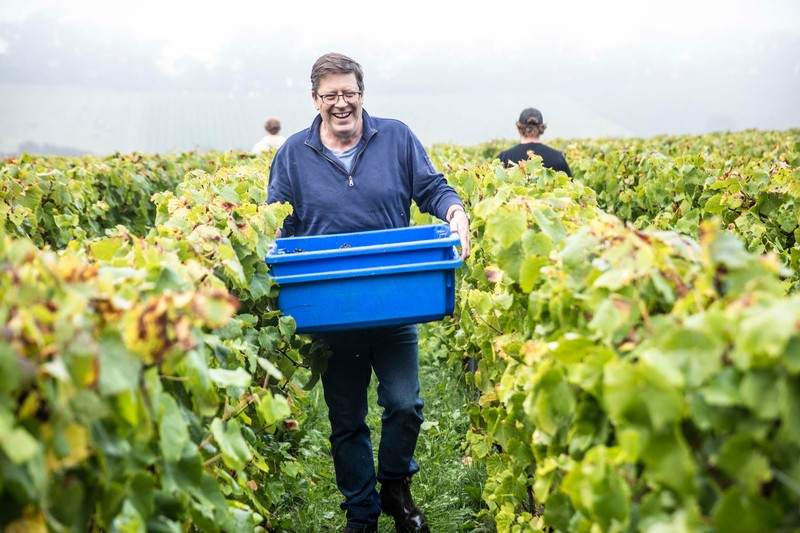
Historically, vine density and row spacing was a function of available land, equipment and techniques of the time. Pre-phylloxera vineyards in Burgundy were planted using a mass layering technique that resulted in very high planting densities (30,000 vines per hectare or more). Vines were arranged in a random pattern with all work in the vineyards done by hand.
In the late 1800s phylloxera destroyed the ‘own roots’ vines in Burgundy and the vineyards were subsequently replanted on American rootstock and arranged in the trellised rows we see today. This replanting coincided with the use of the horse as a labour-saving practice so vines were replanted in rows in the ‘classic’ 1m x 1m spacing. The row width was determined by the width of a horse; machinery that followed later was adapted to suit.
In Australia, as in France, vineyard density has also been determined by available machinery. However, in Australia commercial vineyard tractors are typically based on farm or orchard models with an overall width of 1.5m to 2m; this has necessitated vineyard rows of between 2.5m to 3.5m for adequate machinery access and clearance.
Over the past decade, many cool climate wine growers in Australia have learnt that vines grown with closer spacing between plants and rows have greatly improved quality outcomes. However, the density limit remains dictated by the tractor’s minimum width.
Around the world, consumers of high quality Pinot Noir and Chardonnay look to Burgundy as the benchmark region for the highest quality expression of the two varieties. This highlights the need for Australian producers to examine current practices and techniques and look for areas of potential quality improvement. Recently, commercial vine nurseries in Australia have begun importing new selections of highly regarded Burgundian Pinot Noir and Chardonnay clones that have been widely planted and credited for positive increase in wine quality and complexity.
In an ongoing effort to explore the influence of best viticulture practices on wine quality we have established this new High Density (HD) vineyard, made possible by importing some specialised European vineyard equipment able to work in 1m rows and allowing us to plant our vineyard at the same density used on the best slopes of the Cote d’Or.
Very early indications are that the new plant densities will have very positive impact on fruit quality which will help elevate the wine quality and structure to a higher level. Based on experience with other HD vineyards we expect to see…
- smaller berries and bunches
- better crop load balance
- more cross shading of canopy, fruit and vineyard floor
- humidity levels tend to be higher
- cane, bunch and berry stem lignification are more developed.
These are all key attributes for quality wine production and help to counteract climatic challenges such as sunburnt fruit and vine stress from dry soil and low humidity.
Discover more about our High Density Spedding Vineyard and Gabrielle Vineyard.
The Real Review - Close planted vineyards and wine quality
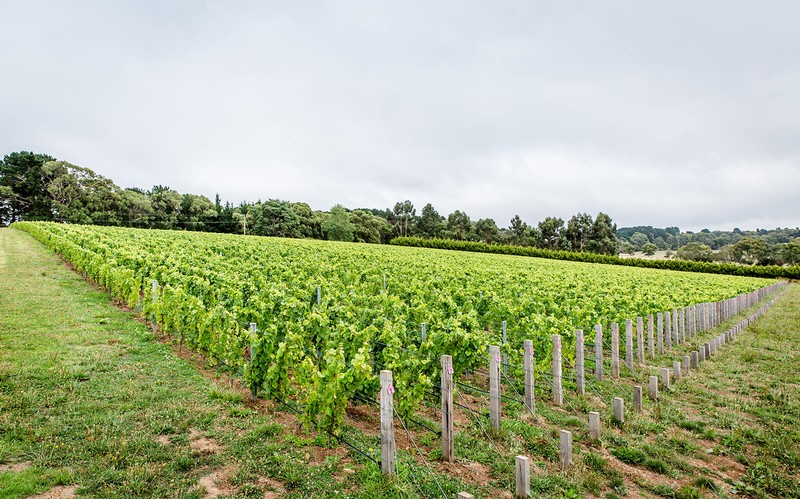
Close-planted vines produce better wine, no?
Well, they must, because the classic French wines from Burgundy, Champagne, Chablis, and most other places are grown in vineyards that are close-planted, much closer than typical Australian vineyards.
Most close-panted vineyards in Australia are very young, but youth may have been immaterial as the Bannockburn pair were by common agreement the hardest to tell apart.
But it’s not that simple.
What works in Volnay or Vouvray doesn’t necessary translate to Australian conditions.
A tasting at a workshop on close-planting, conducted as part of the recent Pinot Noir Celebration Australia on the Mornington Peninsula, was inconclusive.
The tasting was of eight glasses of pinot noir, two each from four producers. One was off a close-planted vineyard, the other off a conventional vineyard of the same producer, in the same locality, and using the same winemaking. All were MV6 clone.
The wines were Bindi Darshan 2019 (close) and Bindi Original Vineyard 2019; Ten Minutes By Tractor McCutcheon Vineyard 2022 and Ten Minutes By Tractor Spedding Vineyard 2022 (close); Bannockburn Estate 2019 and Bannockburn Serré 2019 (close); and Scorpo Old Cherry Orchard 2021 (close) and Scorpo Eocene 2021. The wines were randomised and the tasters were asked to try to tell which was the close-planted in each pair. Most—possibly all of us—failed to*.
Most close-panted vineyards in Australia are very young, but youth may have been immaterial as the Bannockburn pair were by common agreement the hardest to tell apart, although the Serré vines were mature (average age 39 years).
So, what drives vignerons like Bindi’s Michael Dhillon and Ten Minutes By Tractor’s Martin Spedding to plant vines at high density, which is estimated to cost at least four times as much to establish?
The panel laid out the advantages and drawbacks of high-density.
Advantages
- The entire vineyard is involved; there is no idle land.
- Greater lignification (the stems are woodier, which is useful for whole-bunch fermenting).
- Roots drive deeper, making for stability of moisture status.
- Saves irrigation water (Spedding said it uses half the water).
- Smaller bunch and berry size, which increases concentration.
- Shading of the fruit-zone, so less sunburn risk, and leaf-plucking is safer.
- Grape yield per vine is reduced so more goodies go into each berry.
Drawbacks
- Setup cost is estimated between four and five times that of a conventional vineyard.
- Fungal disease problems are increased in wet seasons.
- ‘Normal’ vineyard machinery doesn’t fit the rows.
- Reduced yield per vine may be seen as a disadvantage depending on quality and yield per hectare.
- In cool, high-altitude sites, the vines don’t set fruit if they’re too close.
“You wouldn’t do it unless you had a fantastic site,” said Dhillon.
Spedding and Dhillon both have very small crawler tractors to work their high-density vineyards, and these, while expensive, have an added advantage of reducing soil compaction: “less than a single human walking down the row.”
What is a high-density? The Burgundy and Champagne standard is one metre by one metre, which results in 10,000 vines per hectare. Traditional Aussie vineyards have as few as 2,500 vines per hectare. The panel, consisting of Spedding, Dhillon, climatologist Greg Jones and viticulturist Tim Brown, agreed that anything less than 1.5m spacings is high-density.
Read more here: https://www.therealreview.com/2023/03/07/close-planted-vineyards-and-wine-quality/
Decanter - Australian Pinot Noir: 25 exciting wines to try
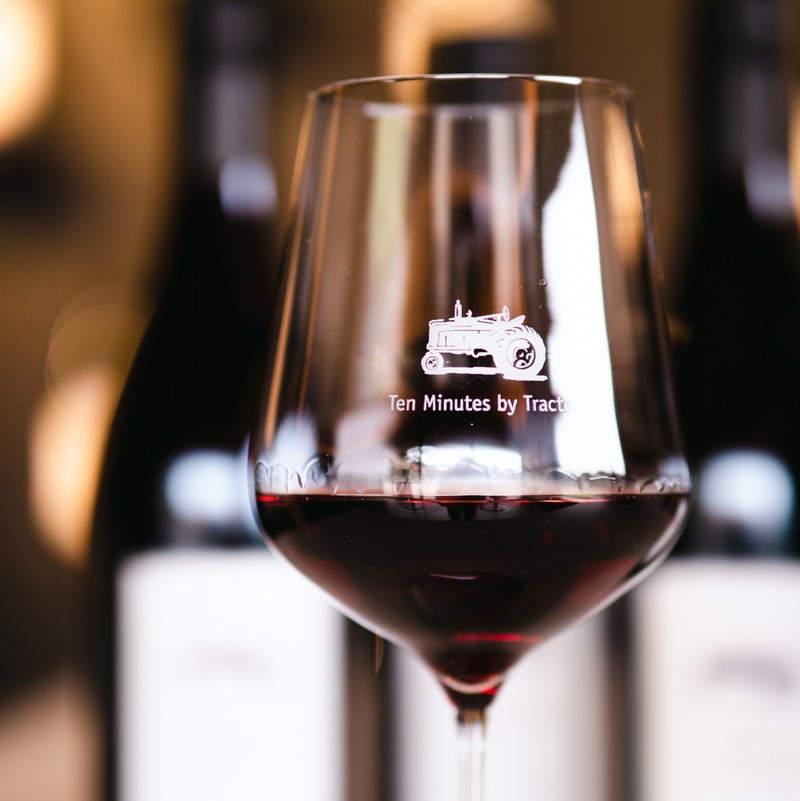
With the popularity of lighter-style red wines showing no signs of abating, it might be time to swap your Aussie Shiraz or Cabernet Sauvignon for a Pinot Noir. Tina Gellie picks out 25 cool-climate Australian Pinot Noirs to try.
There’s 4,948ha of Pinot Noir across Australia (source: Wine Australia 2022), which represents just 3.7% of the total area under vine.
It might be the fourth most planted red variety, well behind Merlot with about 8,500ha, but truly small fry when you consider the country has five times as many plantings of Cabernet Sauvignon, and a whopping eight times as many for Shiraz.
But with the global trend for lighter-style reds showing no signs of abating, this is good news for the country’s Pinot Noir producers. Particularly as even the most expensive represent a value alternative to Burgundy as well as premium-priced examples from neighbouring New Zealand.
COOLART ROAD PINOT NOIR 2019
Martin Spedding makes four single-vineyard wines, wth Coolart Road always the biggest, boldest and most darkly fruited. Grippy, textured tannins and a firm acid line give great structure to the umami-like flavours of mushroom, beetroot and black cherry. Lingering smoky incense and rose petal notes lift the finish.
ESTATE PINOT NOIR 2018
This estate Pinot is now split into the Up the Hill and Down the Hill cuvées, but in this vintage was a barrel selection of Martin Spedding's four vineyards. This is seductively savoury wine, with bold earthy beetroot and undergrowth tones to join autumnal plum and black cherry. Vanilla chai oak spice and supple tannins too.
10X PINOT NOIR 2021
Practically a Coolart Road single-vineyard wine with just 5% Wallis fruit blended in. It's a wonderfully pure expression of ripe black cherry and raspberry fruit kept arrow straight by focused, racy acidity and satin-textured tannins. Dark, earthy notes add savoury complexity.
Read more here: https://www.decanter.com/premium/australian-pinot-noir-25-exciting-wines-to-try-496960/
Introducing the Mills Chardonnay
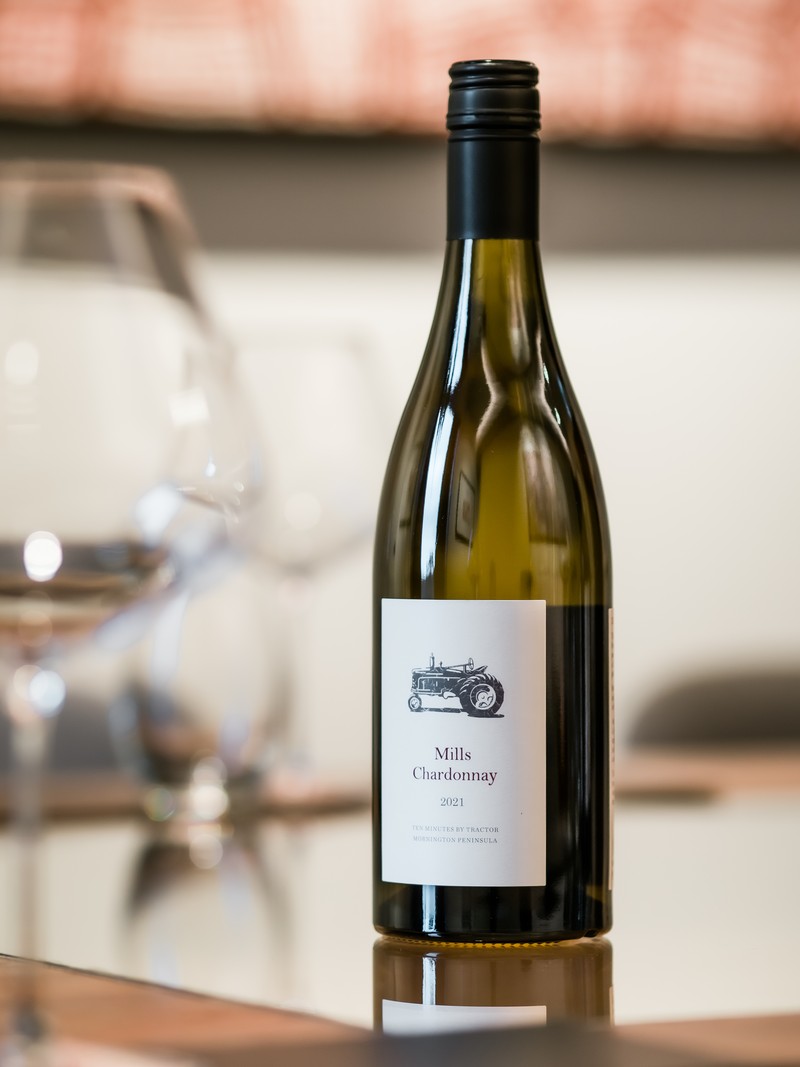
The Mills Vineyard, located in Merricks North on the Mornington Peninsula was planted by the Mills family in 2000 to Chardonnay and Pinot Noir.
The Chardonnay produced from this vineyard has shown a consistent quality and depth of flavour that has resulted in it being an important component of our Estate Chardonnay over the past six years. What became very clear over the years is that the quality of the Chardonnay was head and shoulders above the Pinot. As a result, in 2017, the Pinot Noir was replanted with Chardonnay (Clone 96) with an increased density (75cm spacing). The first vintages of the young Chardonnay block are very promising, with great concentration of flavour - rich and layered.
In 2021, we decided, for the first time, to elevate the Mills Chardonnay to a single vineyard bottling - a reflection of the quality and long-term cellaring potential of this wine.
2021 Single Vineyard Releases

We're pleased to announce the release of our 2021 Single Vineyard wines. The 2021 vintage was outstanding, the first in many years to rival the landmark 2015 vintage. Great acid retention and concentration of flavour have resulted in wines of great balance and fine detail.
2021 Vintage
Moderate temperatures throughout a wet spring and flowering resulted in healthy canopies with slightly lower than average yields. Above average rainfall over the summer due to La Niña was moderated by dry spells and moderate temperatures resulted in slower ripening. This resulted in some late season botrytis, which further reduced our yields. Great acid retention and concentration of flavour has resulted in wines of great balance and fine detail. The wines are outstanding and will reward further with cellaring.
